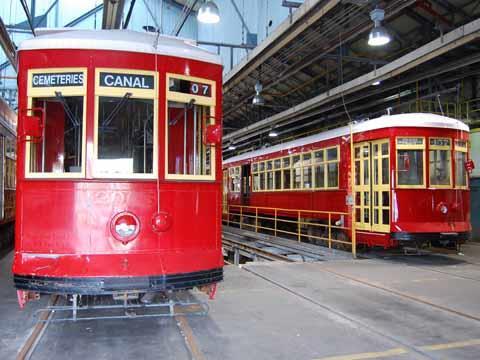
When Hurricane Gustav made its landfall on the US mainland southwest of New Orleans on September 1, there were fears that the city’s transport infrastructure could face further damage, along the lines of the devastation caused when Hurricane Katrina hit the Gulf Coast on August 29 2005. But in the event, Gustav did not damage the city’s famous streetcar network, apart from some trees and overhead wire knocked down by the high winds.
New Orleans Regional Transit Authority is steadily restoring its tourist-dollar-generating streetcar operations (MR 07 p36). According to Norta spokeswoman Rosalind Blanco Cook operations are currently back to about 75% to 80% of the levels provided before Katrina.
An important step forward came in August with the testing of the first refurbished Red Car. The 24 modern cars built for the Canal Street line suffered water damage to their electrical systems when Norta’s Randolph Building on Canal Street was flooded, along with six of the seven Riverfront cars — the seventh of these was already laid up for repairs.
Norta staff have been steadily rebuilding the damaged cars, with the restoration work costing around $1m per vehicle. Meanwhile the green Perley-Thomas cars built for the St Charles Street line in 1923 and 1924 have been working all services, with 12 running on the St Charles line, six on Canal Street and two on the Riverfront line. Following the successful test runs, the operator expects to have at least nine of the Red Cars in operation on the Canal Street line by the end of 2008, with the remainder returning to service by the end of 2009.
Restoration of the flood-damaged infrastructure has also been progressing steadily. While a short section at the city centre end of the St Charles line was operating shortly after Katrina, it took more than two years to refurbish the entire line, during which a substitute bus service was operated.
Services resumed on the section through the Garden District to Napoleon Avenue on November 11 last year. The next section to Riverbend reopened on December 23 2007 but the final 1·2 km stretch to the intersection of Carrollton and Claiborne Avenues was not completed until June 22. Norta is now operating the line almost 24 h a day, with cars every 10 min on weekdays and every 15 min at the weekends. The last car usually leaves around 03.00 and the first for the next day starts at 04.13.
Power supplies remain an issue. While the Riverfront line has its own generating station, a portable substation which was borrowed from Massachusetts Bay Transportation Authority to restart operations after Katrina is still supplying a segment of the Canal Street line.
One problem which Norta faces, like almost every business in New Orleans either public or private, is the decrease in revenue caused by the reduction in the city’s population. Before the post-hurricane evacuation, New Orleans hovered around 650 000 inhabitants. The current census puts the total at about 260 000, although the mayor is reported to be appealing against the figure as he estimates the population at 320 000. But whatever the number, the problem remains that many people relocated elsewhere in Louisiana and throughout the country, and have yet to return.














